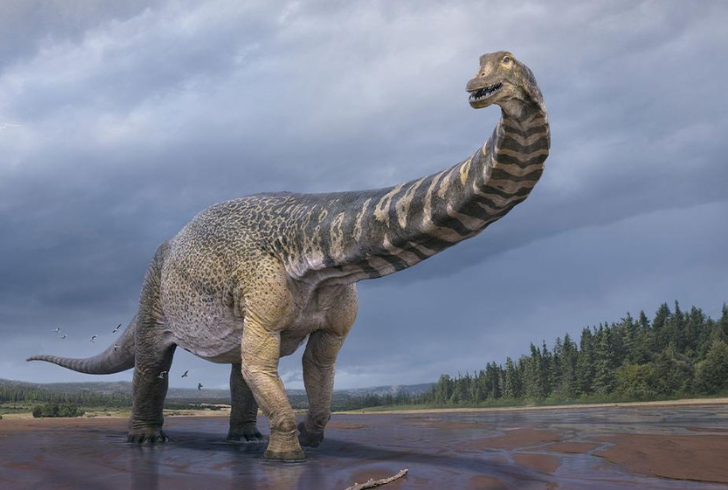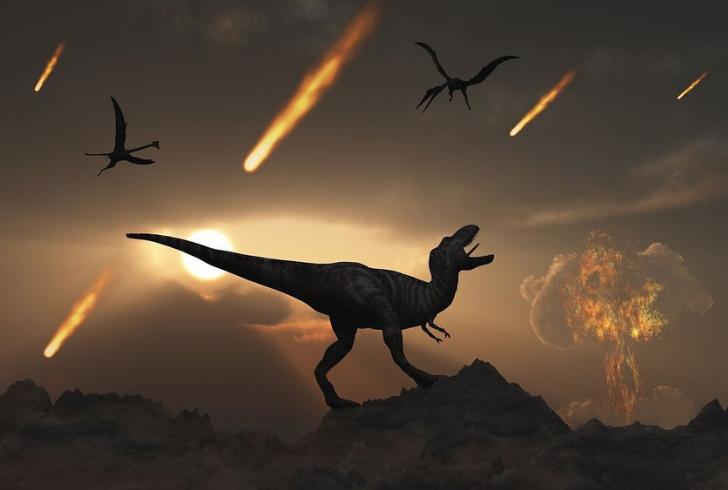A remarkable discovery in Patagonia has revealed a new species of titanosaur, C. calvoi, shedding light on the diversity of these massive prehistoric creatures. Fossils from this giant herbivore show distinct features that set it apart from other titanosaurs, challenging existing theories about dinosaur evolution before the mass extinction event.
As one of the last surviving long-necked dinosaurs, C. calvoi helps scientists understand how biodiversity changed leading up to the catastrophic asteroid impact that wiped out non-avian dinosaurs.
Titanosaurs were the largest land animals to ever roam the planet, and they thrived across different continents. However, South America, particularly Patagonia, served as a key region for their evolution. The discovery of C. calvoi provides crucial insights into how these dinosaurs adapted to their environment and survived until the very end of the Cretaceous period.
A Unique Titanosaur with Distinctive Features

Instagram | cnn | This titanosaur had unique features that set it apart from others.
Paleontologists studying C. calvoi found that while it shares some characteristics with other Late Cretaceous titanosaurs like Overosaurus and Muyelensaurus, it also possesses unique skeletal features. These include:
1. A prominent lateral bulge in its femur.
2. A neural spine that projects backward.
3. A broad yet slender humerus.
These anatomical differences suggest that C. calvoi belonged to a subgroup of titanosaurs called rinconsaurians. According to paleontologist Matt Lamanna, rinconsaurians may have had a more giraffe-like build than other sauropods, meaning they could have fed from higher vegetation. This challenges previous assumptions about their feeding habits and movement.
Titanosaurs’ Role in Prehistoric Ecosystems
Titanosaurs were essential to the ecosystems they inhabited. As the dominant herbivores of their time, they helped shape plant life by feeding on vast amounts of vegetation. Their massive size allowed them to access food sources that smaller herbivores could not reach.
Despite their enormous stature, young titanosaurs were likely vulnerable to predation. While researchers have not identified specific predators of C. calvoi, large carnivorous dinosaurs roaming South America, such as Giganotosaurus, may have hunted them. Studying these interactions helps paleontologists reconstruct ancient food chains and ecological dynamics.
Surviving Until the End of the Dinosaur Age

Instagram | moabgiants | Dinosaurs like C. calvoi thrived until the asteroid struck.
The asteroid impact that struck Earth 66 million years ago caused a mass extinction event that ended the reign of the dinosaurs. However, C. calvoi and other titanosaurs were among the last long-necked herbivores to exist before this catastrophic event.
Some paleontologists have suggested that dinosaur biodiversity was already declining before the asteroid impact. However, Diego Pol, a leading researcher, argues that herbivore diversity remained high in South America. The discovery of C. calvoi supports this claim, showing that titanosaurs continued to thrive in Patagonia until the very end of the Cretaceous period.
New Discoveries Continue to Shape Our Understanding
Fossil discoveries like C. calvoi help scientists piece together the puzzle of prehistoric life. The unique skeletal traits of this species reveal that titanosaurs were more diverse than previously thought. Studying these fossils allows paleontologists to refine their understanding of dinosaur evolution, adaptation, and extinction.
Each new discovery provides valuable data about how these magnificent giants lived and what factors contributed to their survival and eventual disappearance. As scientists continue to unearth and analyze fossils, they move closer to answering long-standing questions about the ancient world and the creatures that once dominated it.
